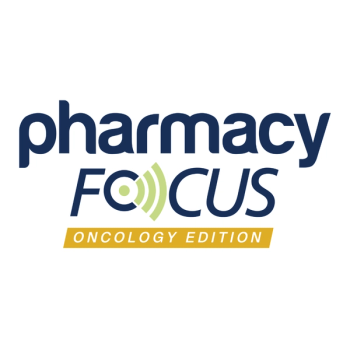
- May/June 2014
- Volume 5
- Issue 3
Oncology Pharmacy: The Need for Specialization in Specialty Pharmacy
The complexities of cancer and the ever-changing medication regimens employed in its treatment call for the specialized competencies of oncology-focused pharmacies. High-touch care and oncology expertise can improve outcomes.
The complexities of cancer and the ever-changing medication regimens employed in its treatment call for the specialized competencies of oncology-focused pharmacies. High-touch care and oncology expertise can improve outcomes.
Specialty pharmacy has garnered increased attention over the last decade from the broad spectrum of stakeholders within the health care industry. The government, pharmaceutical manufacturers, payers, pharmacy benefit managers, physicians, group purchasing organizations, hospitals, and pharmacies have all moved into or been involved in the specialty pharmacy space in one way or another.
Given the trends driving the growth in specialty pharmacy, this is no surprise. The same trends that helped generate the need for specialty pharmacy in the first place are creating the need for deeper and more focused disciplines within specialty pharmacy itself.
As the health care landscape evolved to address and meet the challenges these trends posed, it gave rise to the specialty pharmacy sector. More specifically, those trends included:
- Robust pipeline
- Exponentially increasing health care costs
- Shifting treatment and pharmacy service paradigms
History is repeating itself, and the marketplace is calling for a new solution to help meet the increasingly complex and nuanced needs of pharmaceutical cancer care. This new discipline is oncology pharmacy.
In this series of articles, we will take a look at the dynamic demands of the oncology pharmacy care landscape, the new competencies and skill sets required to effectively meet those demands, and some unique success stories that are the result of an up-and-coming branch of pharmacy.
We begin with industry trends in oncology that are driving the marketplace need for new and unique solutions such as oncology pharmacy.
Oncology Trends and Industry Drivers
1. Robust and Rapidly Expanding Pipeline
It is widely known within our industry that specialty medications are driving the drug pipeline. However, oncology agents account for nearly one-third of the overall pipeline. That is a staggering figure, bolstered by the fact that oncology agents dominate the pipeline of biologics, making up more than 70% of biologic medications in development.1
There are several factors pushing this growth in the oncology pipeline. The first is the rising incidence of cancer within the US and global populations. By the year 2030, the global incidence of cancer is projected to increase by an almost unfathomable 75%.2 For the United States, that equates to 2.3 million new cancer cases per year over that same time frame.3 That is a marked increase from the current annual rate of 1.7 million new cancer cases.4
A second factor driving the increase in drugs being developed for cancer treatment has been the orphan drug designation from the FDA, as it provides pharmaceutical manufacturers with certain advantages that have made investing research and development dollars into orphan disease states an attractive option.
A disease state is considered orphan if it affects fewer than 200,000 patients annually. Given the high cost of research and development, and since these are smaller populations, in order to entice manufacturers to invest in orphan diseases, the FDA has a faster approval process and allows longer patent protection. This has led to a surge in therapies in development for orphan disease states. Over the last decade or so, the average annual number of orphan drugs in development has more than doubled compared with the prior decade.5
The advancements in medications for rare diseases have been remarkable, and while this offers incredible hope and promise for those who suffer from orphan diseases, that hope can come with a rather hefty price tag.
2. Health Care’s Rising Cost
Burden It could be said that there are now 3 certainties in life: death, taxes, and increasing health care costs. This is particularly true when it comes to cancer, as it is one of the costliest diseases to treat for both patients and payers.
From surgery to imaging, and on to medications, costs can quickly soar into 6 figures and beyond, often forcing patients to look for alternative means of affording access to care, while payers look for solutions not just to curtail costs, but help ensure maximized spending efficiency.
In fact, for the next several years, US oncology medication spend is projected to grow 20% year-over-year to $173 billion in 2020.6 This means that payers will have to figure out a way to manage a 4-fold increase in oncology medication spending in roughly 6 years’ time.
That is not a trend that can easily be sustained, and while the traditional payer methods of cost management, such as prior authorization and reimbursement cuts, will have some effect, the proliferation of new cancer therapies means the disease state will be dominated by brands for years to come. Over the last 3 years, the number of new oncology medications approved by the FDA has averaged 10 drugs per year, at an average cost of $7500 per treatment cycle.7 In addition, the ever-evolving nature of treatment protocols as new treatments continue to come to market will likely outpace the ability of payers to effectively manage care in a prospective manner.
3. Shifting Treatment and Pharmacy Service Paradigms
In the early 1990s, specialty pharmacies evolved to meet the needs of new biologic and high-cost treatments that the traditional pharmacy care delivery channel was not equipped to meet and manage appropriately. Cancer is a dynamic disease that is only predictable in its unpredictability and rapidly morphing nature. The pace of change, not only with the disease itself, but with the science of treatment, means that solutions will need to evolve to meet the highly specialized needs of the oncology care landscape.
With all the attention being paid to cancer treatment, and so much at stake from both a cost and an outcomes perspective, it’s no surprise that pharmaceutical manufacturers, payers, and physicians are placing increasingly higher demands on the minimum service requirements and competencies they expect patients to receive from pharmacy service providers.
Additionally, as the effects of average sales price reimbursement continue to spur industry consolidation through hospital acquisition of community practices, having the ability to meet different treatment paradigms based on the site of care will become more and more of a need.
What all of this means is that we are in the midst of the rise of oncology pharmacy as the solution to help meet the critical care needs of pharmaceutical cancer care. The unique competencies that an oncology-focused pharmacy can bring to the marketplace will become the best practice standards for the industry. This means the traditional hallmarks of specialty pharmacy, such as high-touch service and patient-centric care, will need to be taken to a new level, one that has been designed specifically for cancer treatment.
While many pharmacy providers are able to offer basic oncology services today, there are reasons why networks continue to shrink on both the payer and manufacturer sides. High treatment costs and complex clinical management demand novel solutions that cannot be developed without experience and expertise providing pharmaceutical cancer treatment.
Pharma wants to ensure that its medications are administered at the highest care standards and that patients receive excellent clinical support, payers want to ensure that the dollars they are spending on treatment will achieve maximal value and clinical utility for their members, and patients want to ensure that they can afford their therapies and have a support system in place that will be committed to helping them battle the disease.
Oncology pharmacy sits in a unique spot within the continuum of care, and has the ability to effectively support the needs of all stakeholders. It’s an exciting time to be involved in the oncology pharmacy discipline, particularly as the US health care model attempts to shift from service-based to being more patient and quality focused. SPT
References
- 2013 report: medicines in development—biologics. Pharmaceutical Research and Manufacturers of America. www.phrma.org/sites/default/files/pdf/biologics2013.pdf.
- Report: number of cancer cases worldwide could go up 75% by 2030. CNN website. http://thechart.blogs.cnn.com/2012/05/31/report-number-of-cancer-cases-worldwide-could-go-up-75-by-2030/. Published May 31, 2012.
- Cancer Facts & Figures. American Cancer Society.
- Cancer Statistics 2013. American Cancer Society.
- The biopharmaceutical pipeline: evolving science, hope for patients. Pharmaceutical Research and Manufacturers of America. http://phrma.org/sites/default/files/pdf/phrmapipelinereportfinal11713.pdf. Published January 2013.
- Analysis: drug costs become bigger issue in cancer care. Reuters. www.reuters.com/article/2012/06/15/us-cancer-cost-idUSBRE85E05B20120615. Published June 15, 2012.
- Onco360 analysis. Data on file.
About the Author
Amvrosios Ioannidis, MBA, is chief brand and marketing officer at Onco360/OncoMed. He is responsible for the development, execution, and maintenance of Onco360’s brand and marketing strategies, including supporting sales, public and trade relations, account management, and key cross-functional operations and work groups, and for developing Web and e-commerce strategies. He has more than 10 years of marketing experience in the health care and pharmacy services sectors and previously held marketing positions at Medco Health Solutions, Inc. Mr. Ioannidis has a Master of Business Administration degree from William Paterson University. He joined the editorial board of Specialty Pharmacy Times with this edition.
Articles in this issue
over 11 years ago
Idelalisib Shows Promise in Blocking Blood Cancer Growthover 11 years ago
One-Fourth of Men Drop Out of Prostate Cancer Active Surveillanceover 11 years ago
Gazyva by Genentechover 11 years ago
GI Cancers: Neuroendocrine Cancer Updateover 11 years ago
Specialty Pharmacy-Specific URAC StandardsNewsletter
Stay informed on drug updates, treatment guidelines, and pharmacy practice trends—subscribe to Pharmacy Times for weekly clinical insights.













































































































































































































